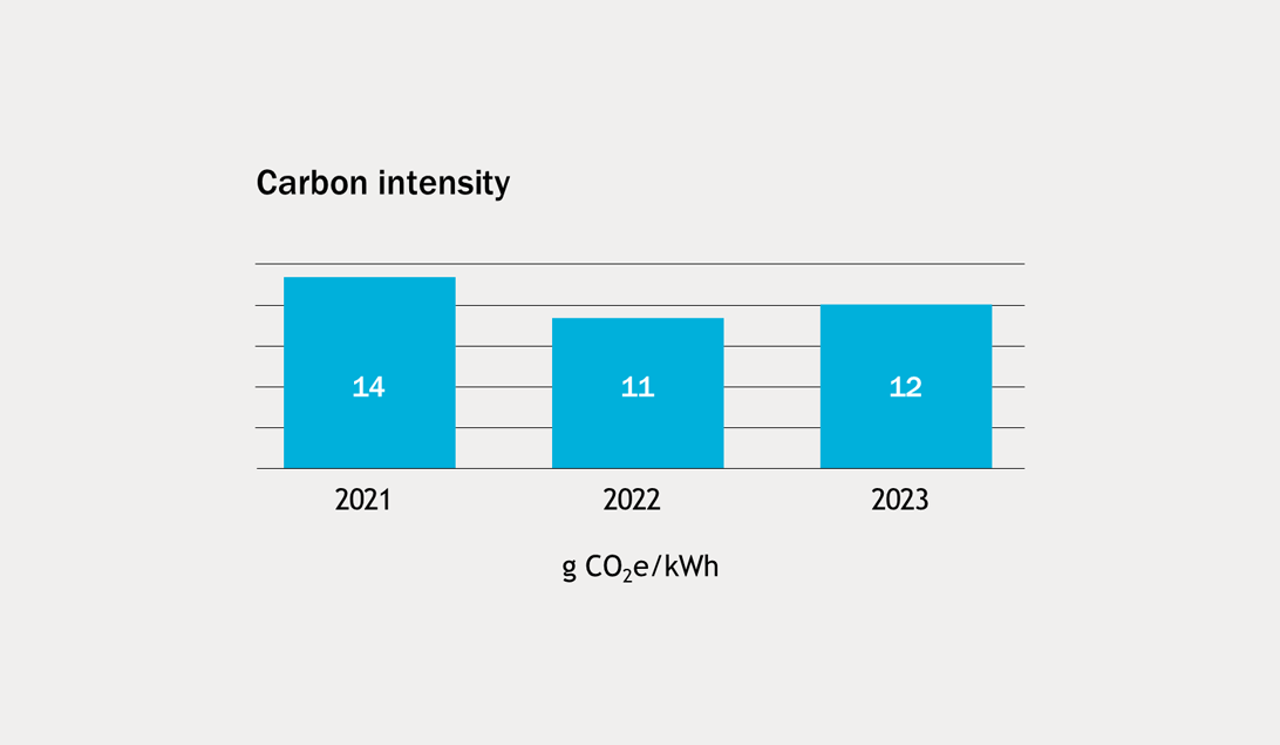
Climate Action: Our commitment to a net-zero future
We recognize the urgent need to address the global climate crisis. As the largest producer of renewable energy in Europe, we are uniquely positioned to lead the transition to a cleaner, greener, and more sustainable future. Our strategy is focused on creating value by enabling a net-zero future.

Overall picture and general status at Statkraft
Statkraft is the largest producer of renewable energy in Europe, with a share of 97% renewable energy.
Our current GHG intensity (scope 1+2) from our power generation is one of the lowest in the EU energy sector.
Statkraft’s production from gas-fired power plants and thereby gas-related emissions (both scope 1 and 3) changes with the market conditions. In the transition to 100% renewable energy, flexibility from gas-fired power plants may balance the fluctuating power sources of solar and onshore wind.
We have established processes for identifying, assessing, and monitoring physical climate risks and relevant mitigation measures. Company-wide climate-related physical and transition risks are regularly assessed at asset level.
100% of our electricity consumption is compensated with Guarantees of Origin, and we offset direct emissions not covered by the EU Emission Trading System.
Key targets
Additional key priorities and actions going forward
- Updated requirements and guidelines, including climate & circularity tools, will be made available by the end of 2025
- Assess possibilities for including science-based climate targets as part of evaluation of suppliers by the end of 2025
- By mid-2025, review our current approach to carbon offsets and removals and recommend improvements
- Develop guidelines and best practice for offices and sites guiding reduction of energy consumption by the end of 2025
- By the end of 2025, develop a company-wide strategy for phasing out the use of SF6 gas
- Investigate options within travel system for facilitating GHG emissions reductions related to business travel, and by 2026 set GHG emissions reduction targets per capita
Back to sustainability strategy page

Our sustainability strategy
Sustainability is at the core of our mission to renew the way the world is powered. Our sustainability strategy is an integral part of our corporate strategy and sets the direction for how we will con...
Read more